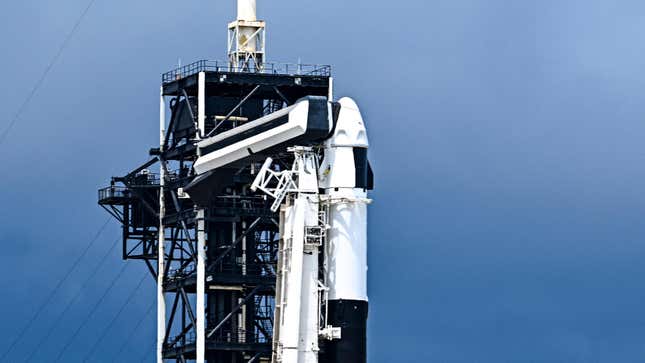
A SpaceX rocket booster crashed as it was landing Wednesday, causing the aerospace company to postpone a launch it had planned later in the day. The Federal Aviation Administration has since grounded all Falcon 9 rockets until an investigation into the crash is completed, Futurism reports. That throws a wrench into SpaceX’s plans to conduct the first private spacewalk, but it could also delay the planned February mission to rescue the two astronauts stranded on board the International Space Station.
Originally, SpaceX had planned to conduct its spacewalk back in April, but that was delayed until August 26. The discovery of a helium leak and bad weather then moved the launch date even further into the future. Now, it’s unclear when the mission, known as Polaris Dawn, will take place. Back in July, when the Falcon 9 had an engine issue, it was fixed and ready to go in about two weeks, so it’s possible SpaceX will be able to figure out what’s wrong pretty quickly.
In response to the news, Jason Isaacman, the billionaire in charge of the Polaris Dawn mission, tweeted, “We’re just focused on recovery weather at this point. I think that is still gate to our launch.” So it doesn’t sound like he’s too concerned about the delay, but then again, would Elon Musk allow anyone at one of his companies to ever sound concerned about anything?
If the investigation drags on, though, that could be an issue not just for Polaris Dawn but also for the two astronauts who are currently stuck on the ISS after Boeing shit the bed with the Starliner rocket. SpaceX currently doesn’t plan to conduct that rescue mission until February, so there’s still time, but if it can’t get the Falcon 9 approved for use quickly, they could find themselves stuck up there even longer.
“The loss of B1062 is a poignant reminder of the challenges involved in spaceflight and the pioneering nature of SpaceX’s missions,” SpaceX said in a statement. “As the company continues to push the boundaries of rocket re-usability, every setback provides valuable insights that drive further innovation.”







